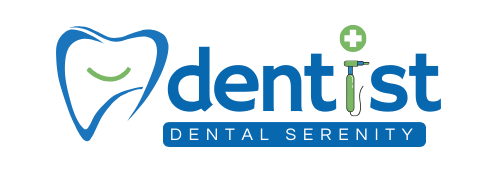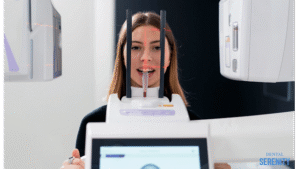CBCT scanner
A CBCT scanner is a powerful imaging device used in dentistry to capture detailed three-dimensional images of a patient’s teeth bones and surrounding tissues. Unlike traditional X-rays that provide only two-dimensional views, CBCT technology captures comprehensive images from multiple angles, offering a clearer and more precise view of the mouth, jaw, and related structures. This technology has become essential in modern dentistry for diagnosing, planning, and performing complex dental procedures.
What is CBCT Technology?
Cone Beam Computed Tomography (CBCT) is a type of X-ray imaging technology that utilizes a cone-shaped beam of radiation to capture multiple images of the area being examined. These images are then processed by a computer to create a 3D model that can be viewed and analyzed from different angles. The term “cone beam” refers to the shape of the X-ray beam used in this process. The CBCT scanner rotates around the patient’s head while taking images from various perspectives, which are then reconstructed into a three-dimensional image for evaluation.
Unlike traditional CT scans, which use a fan-shaped beam and produce more generalized images of the body, CBCT focuses specifically on the area being examined and provides high-resolution images with greater detail. This makes CBCT particularly useful in dental imaging, as it allows for more accurate diagnostics and treatment planning for dental procedures such as implants, root canals, and jaw surgeries.
How Does a CBCT Scanner Work?
The process of using a CBCT scanner is relatively simple and non-invasive. The patient is positioned in the scanner, and the head is held still during the scan to ensure accurate images. The CBCT machine rotates around the patient’s head, capturing multiple images of the teeth, bones, and soft tissues from different angles. The cone-shaped beam of radiation passes through the body, and sensors within the machine detect the amount of radiation that is absorbed by the tissues. These images are then reconstructed into a three-dimensional model using specialized software.
The resulting 3D image can be viewed from any angle, allowing dentists and oral surgeons to examine the area in great detail. The images produced by the CBCT scanner provide a more comprehensive view than traditional X-rays, making it easier to identify potential issues and plan the appropriate course of treatment.
Applications of CBCT in Dentistry
CBCT technology has a wide range of applications in dentistry. Some of the most common uses include:
Dental Implant Planning
One of the primary uses of CBCT in dentistry is for dental implant planning. When placing dental implants, it is essential to assess the bone structure to determine if there is enough bone density and volume to support the implant. CBCT scans provide detailed 3D images of the jawbone, allowing the dentist or oral surgeon to evaluate bone quality, measure bone volume, and identify critical anatomical structures such as nerves and sinuses. This detailed information helps guide the precise placement of the implant, reducing the risk of complications and improving the overall success rate of the procedure.
Orthodontics
In orthodontics, CBCT is used to assess the alignment of the teeth, jaws, and bite. The 3D images produced by CBCT allow orthodontists to better understand the positioning of the teeth and surrounding bone structures. This helps in planning treatments such as braces, clear aligners, and other orthodontic procedures. CBCT scans also help orthodontists track changes in the teeth and jaws over time, ensuring that treatment plans are adjusted as needed to achieve the best possible results.
Endodontics
CBCT technology is also used in endodontics to evaluate the root canals of teeth. In root canal therapy, it is essential to identify the number of canals, their shape, and any anomalies that may be present. Traditional X-rays may not provide a clear view of the complex root system, but CBCT offers detailed images that allow endodontists to accurately diagnose and treat conditions such as infected or damaged root canals. This improves the success rate of root canal treatments and reduces the need for retreatment.
TMJ Disorders
CBCT is an effective tool for diagnosing temporomandibular joint (TMJ) disorders. The 3D images produced by the scanner provide a detailed view of the jaw joints, allowing the dentist to assess the condition of the cartilage, bone, and soft tissues. This is particularly useful for identifying issues such as joint degeneration, misalignment, or inflammation, which can cause pain and discomfort. CBCT scans can also help in planning treatments for TMJ disorders, such as splints, physical therapy, or surgery.
Sinus and Airway Evaluation
CBCT technology is commonly used to evaluate the sinuses and airways, especially in procedures such as sinus lifts or in the treatment of sleep apnea. CBCT provides detailed images of the sinuses, helping dentists and oral surgeons to assess the size and shape of the sinus cavities. This is important when planning procedures like dental implant placement in the upper jaw, as the sinuses must be avoided during the surgery. Additionally, CBCT scans help evaluate the airway for conditions like obstructive sleep apnea, allowing for more accurate diagnosis and treatment planning.
Oral Pathology
CBCT scans are also valuable for diagnosing oral pathology, including tumors, cysts, and other abnormalities in the jaw and surrounding areas. Traditional X-rays may not provide sufficient detail to detect small or early-stage lesions, but CBCT offers a clearer view of both hard and soft tissues. This enables dentists to identify potential issues early, leading to more effective treatment and better patient outcomes.
Benefits of CBCT in Dentistry
CBCT offers several advantages over traditional dental imaging methods:
High-Resolution 3D Imaging
Unlike traditional X-rays, which provide only two-dimensional images, CBCT produces detailed three-dimensional images that allow for a more comprehensive assessment of the patient’s oral and maxillofacial structures. This enhanced level of detail helps dentists diagnose and plan treatments more accurately.
Reduced Radiation Exposure
While CBCT scans do involve some radiation, the exposure is typically much lower than that of traditional CT scans. CBCT technology is designed to deliver the lowest possible radiation dose while still providing high-quality images, making it a safer option for patients.
Non-Invasive and Efficient
The CBCT scanning process is quick and non-invasive, with most scans taking only a few minutes to complete. There is no need for contrast agents or injections, and the patient does not have to undergo any uncomfortable procedures. The speed and ease of the process make it an ideal option for patients who need quick and accurate diagnostic imaging.
Enhanced Treatment Planning
CBCT scans provide detailed information that allows dentists to plan procedures with greater precision. Whether it is placing dental implants, diagnosing root canal issues, or planning orthodontic treatment, CBCT helps dentists create more accurate and customized treatment plans. This leads to better outcomes and fewer complications.
Limitations and Considerations
While CBCT offers many benefits, there are some limitations to consider. The radiation dose, although lower than traditional CT scans, is still higher than that of a standard dental X-ray. This means that CBCT should be used only when necessary and for specific diagnostic purposes. Additionally, CBCT technology requires specialized equipment and training, and not all dental offices may have access to this advanced imaging tool.
Conclusion
CBCT technology has revolutionized dental imaging by providing high-resolution, three-dimensional images that allow for more accurate diagnoses and treatment planning. It has become an invaluable tool for various dental procedures, including dental implants, orthodontics, root canal therapy, and TMJ disorders. By offering detailed insights into the teeth, jawbone, and surrounding tissues, CBCT helps dentists plan and perform treatments with greater precision, improving patient outcomes. While CBCT does involve some radiation, its benefits far outweigh the risks when used appropriately, making it a key component of modern dental care.

